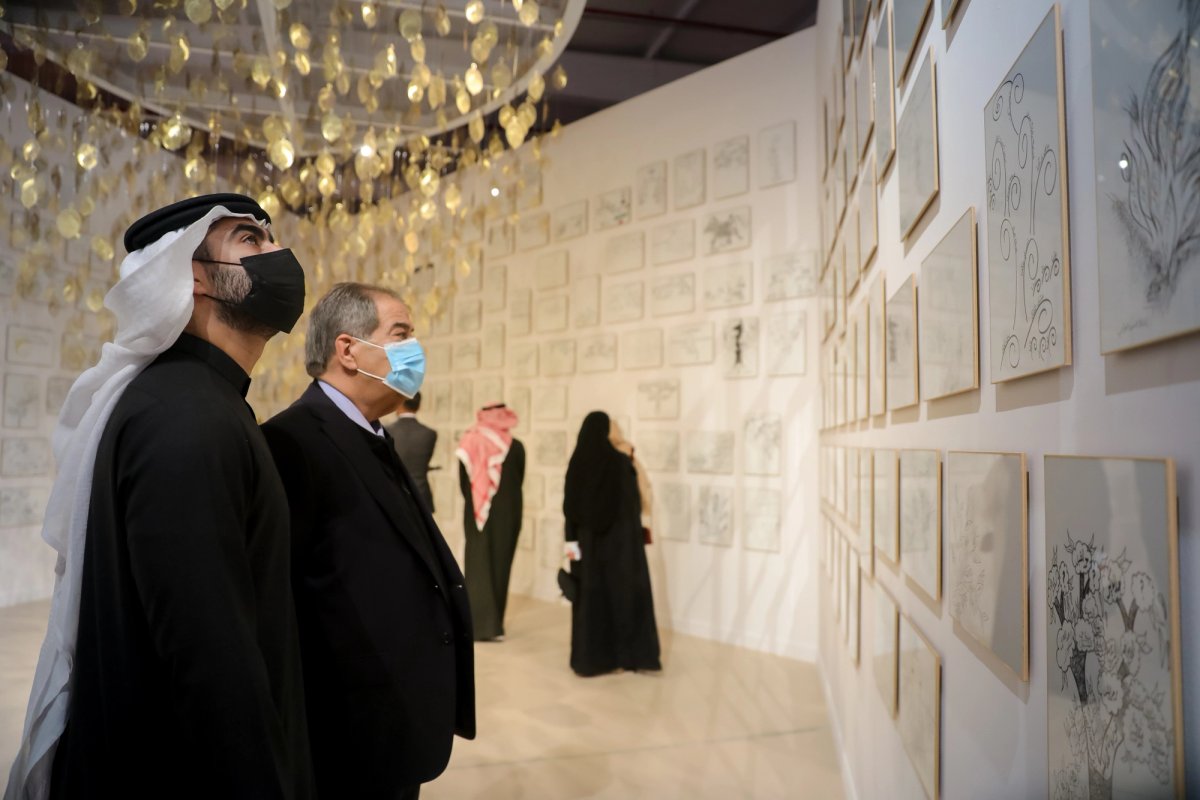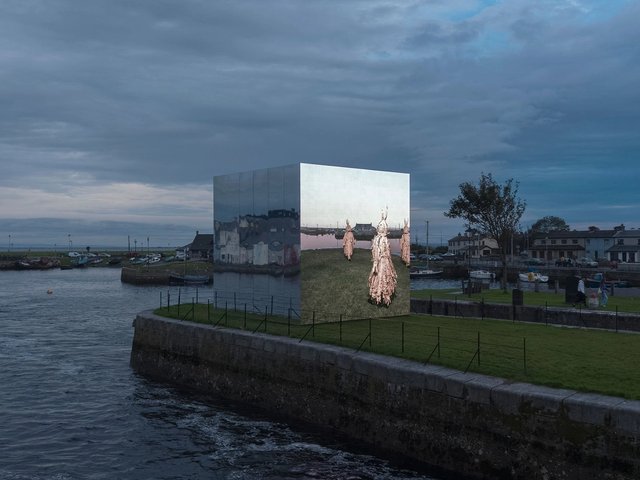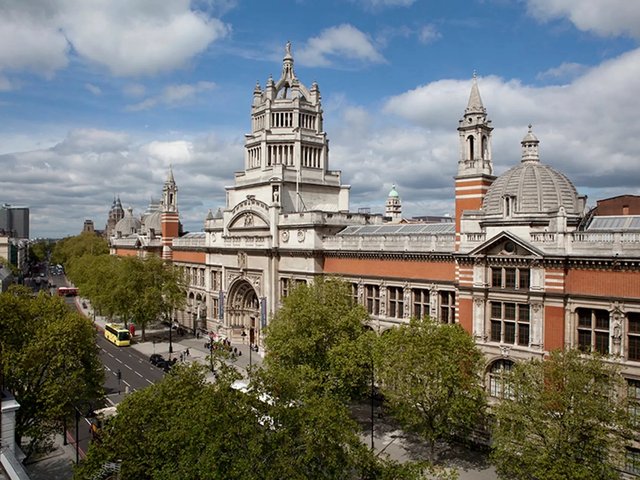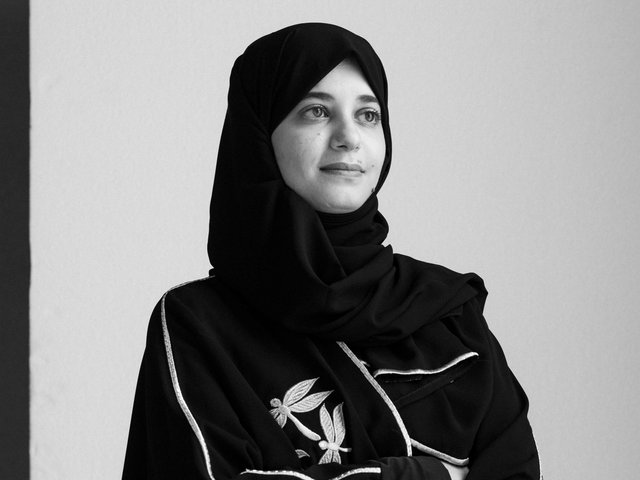The UK government has signed a memorandum of understanding with the Saudi Arabian state designed to strengthen cultural links between the two countries. Nadine Dorries, the UK Culture Secretary, participated in the signing ceremony at the Diriyah Biennale in the Jax district on the outskirts of Riyadh.
Prince Badr bin Abdullah bin Mohammed bin Farhan Al-Saud, the Minister of Culture and Governor of the Royal Commission for AlUla, also signed the memorandum against the backdrop of the installation Birth of a Place (2021) by the Saudi artist Zahrah Al Ghamdi, a centrepiece of the thematic area entitled Experimental Preservation. The work “serves as an elegy to the ancestral foundations of the town [Diriyah], which is now a hub of gentrification”, says a wall text.
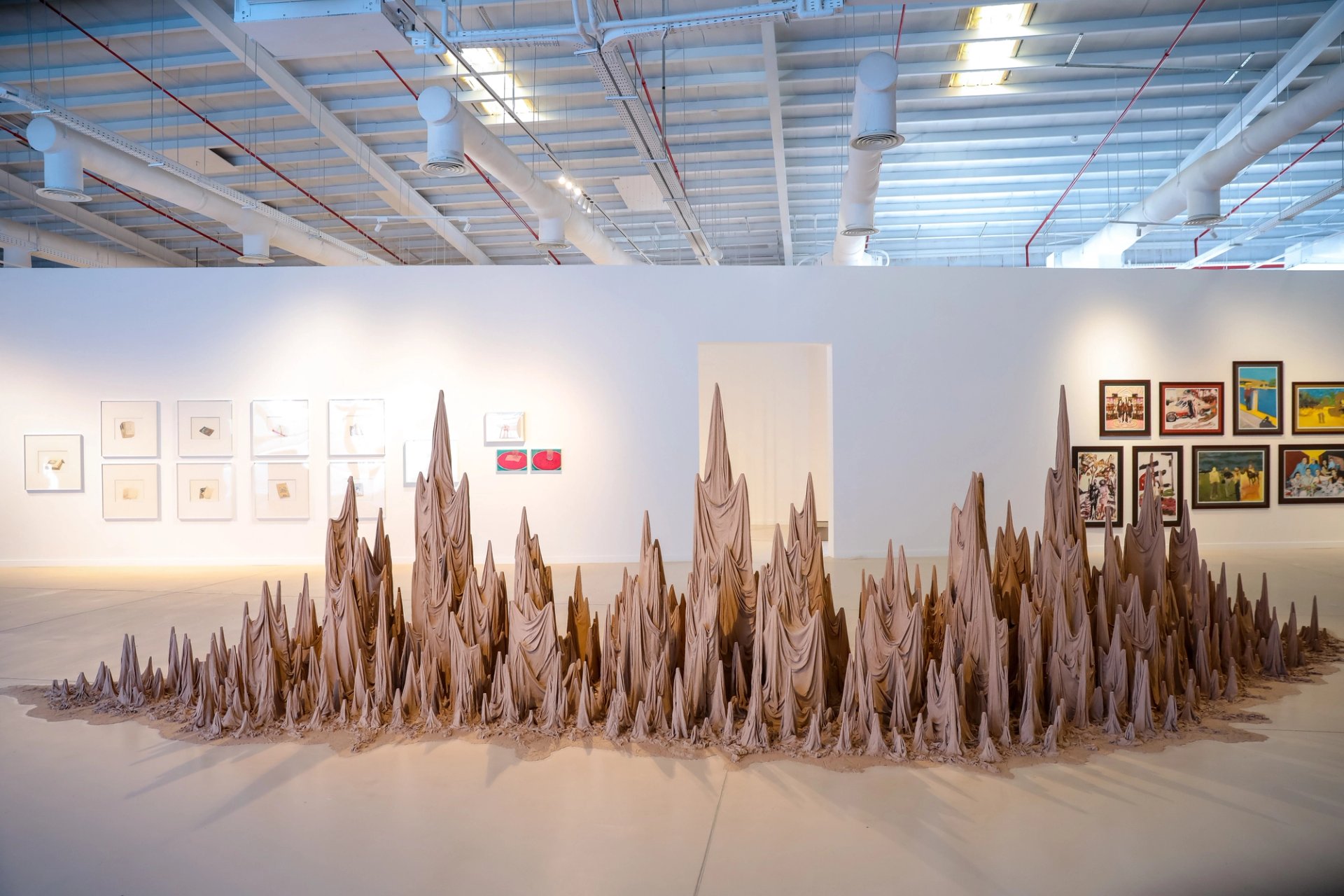
Zahrah Al Ghamdi's Birth of a Place (2021) © Diriyah Biennale Foundation and the artist
A statement from the UK Department for Digital, Culture, Media and Sport says: “[Dorries] will be in the region to strengthen ties in sports, tourism and the arts and is expected to sign memoranda of understanding to increase cooperation with her Saudi Arabian counterparts across sport and culture.” This involves focusing on collaborations in the film, museum and heritage sectors along with sustainable tourism, the department adds. The Saudi culture ministry declined to comment further on the proposed partnership.
The amazing Diriyah Biennale was the perfect place to sign a new UK-KSA 🇬🇧🇸🇦 agreement on culture with HH Prince @BadrFAlSaud.
— Rt Hon Nadine Dorries (@NadineDorries) February 7, 2022
Culture has the power to unite people from every background, and this new agreement will strengthen our ties on film, museums and heritage. pic.twitter.com/IIpHAUkGgX
The rapprochement comes as Saudi Arabia embarks on a soft power drive with an avalanche of events such as the Tuwaiq sculpture commissions for public art in Riyadh, the Jeddah edition of the roving Bienal Sur, and the second edition of Desert X Al Ula, which launches this week (11 February-30 March).
But the UK-Saudi Arabia deal may raise eyebrows among some British arts professionals who are concerned about Saudi Arabia’s human rights record. An unnamed UK curator says that she is, for instance, alarmed about the country’s stance on LGBTQ rights. According to its 2020 report, Amnesty says that “homosexuality remains prohibited in Saudi Arabia, punishable by flogging and imprisonment”.
Saudi invests in homegrown biennials
Sixty-four artists are participating in the Diriyah Biennale (until 11 March) with 27 practitioners from Saudi Arabia including Daniah Al Saleh and Marwah AlMugait. The biennale was initiated by the Saudi Ministry of Culture and is organised by the newly formed Diriyah Biennale Foundation. Another new initiative, the Diriyah Islamic Arts Biennale, is planned for this year (the biennials will run in alternate years).
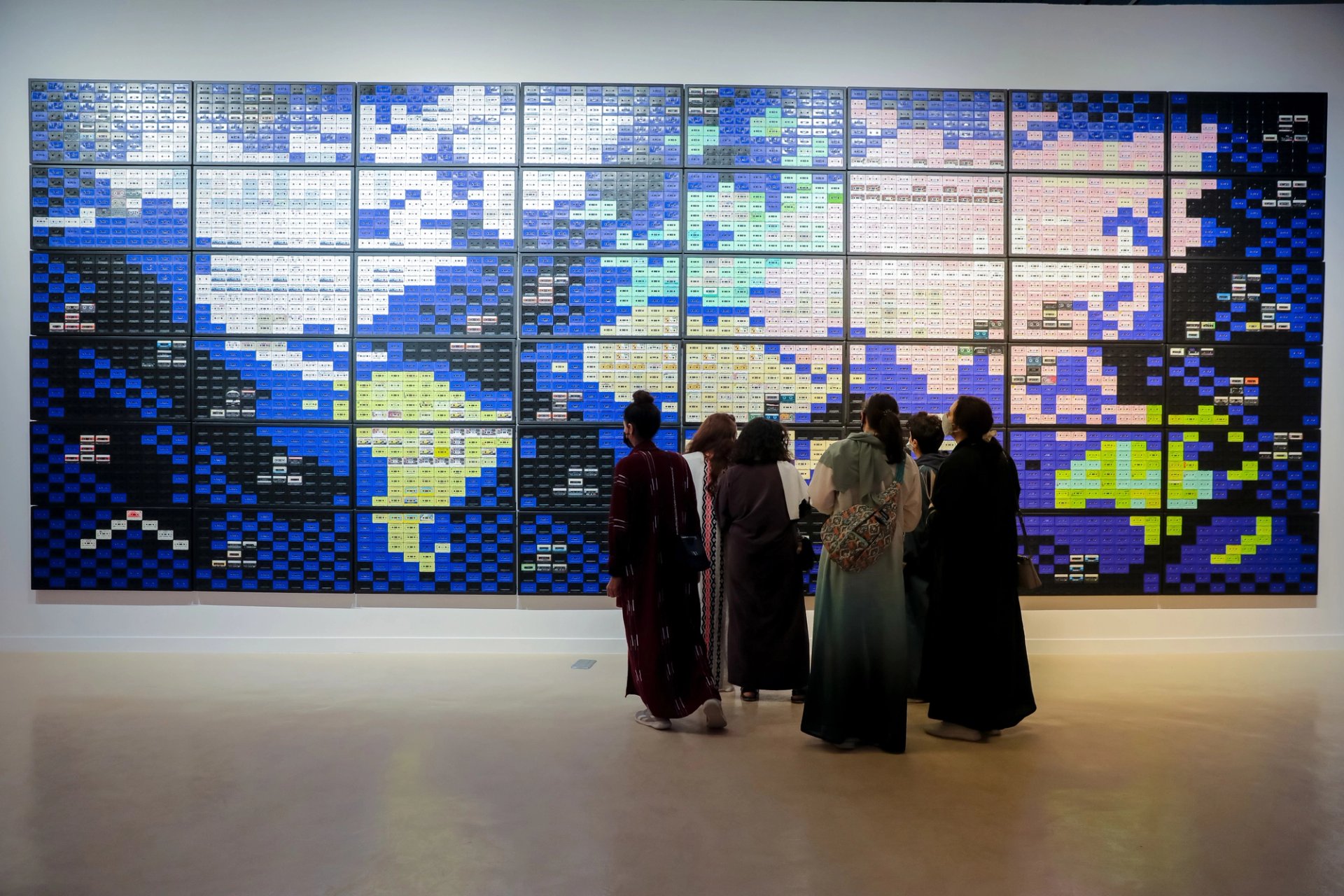
Maha Malluh's Food for Thought, World Map (2021) Courtesy of Canvas and Diriyah Biennale Foundation
Highlights include Maha Malluh’s Food for Thought, World Map installation (2021) commissioned by the Diriyah Biennale Foundation, which consists of 3,840 cassette tapes dating from the 1980s that play religious readings and Islamic texts. The mass of tapes depict a map of the world but their symbolic value, as reminders of a more communal pre-internet era, gives the work an extra dimension. Another Saudi artist, Abdullah Al Othman, is showing an eye-popping work entitled Manifesto: The Language & City (2021), an assemblage of neon lighting, lightboxes and found wooden signage evoking past and present street life in Saudi Arabia.

Abdullah Al Othman's Manifesto, The Language & City (2021) © Diriyah Biennale Foundation and the artist
The chief curator, Philip Tinari, draws parallels between China and Saudi Arabia under the title Feeling the Stones. The biennale title comes from a 1980s Chinese slogan, “crossing the river by feeling the stones’, referring to the strategies adopted by China in the late 1970s when transformative economic reforms began opening up the country to the international community.
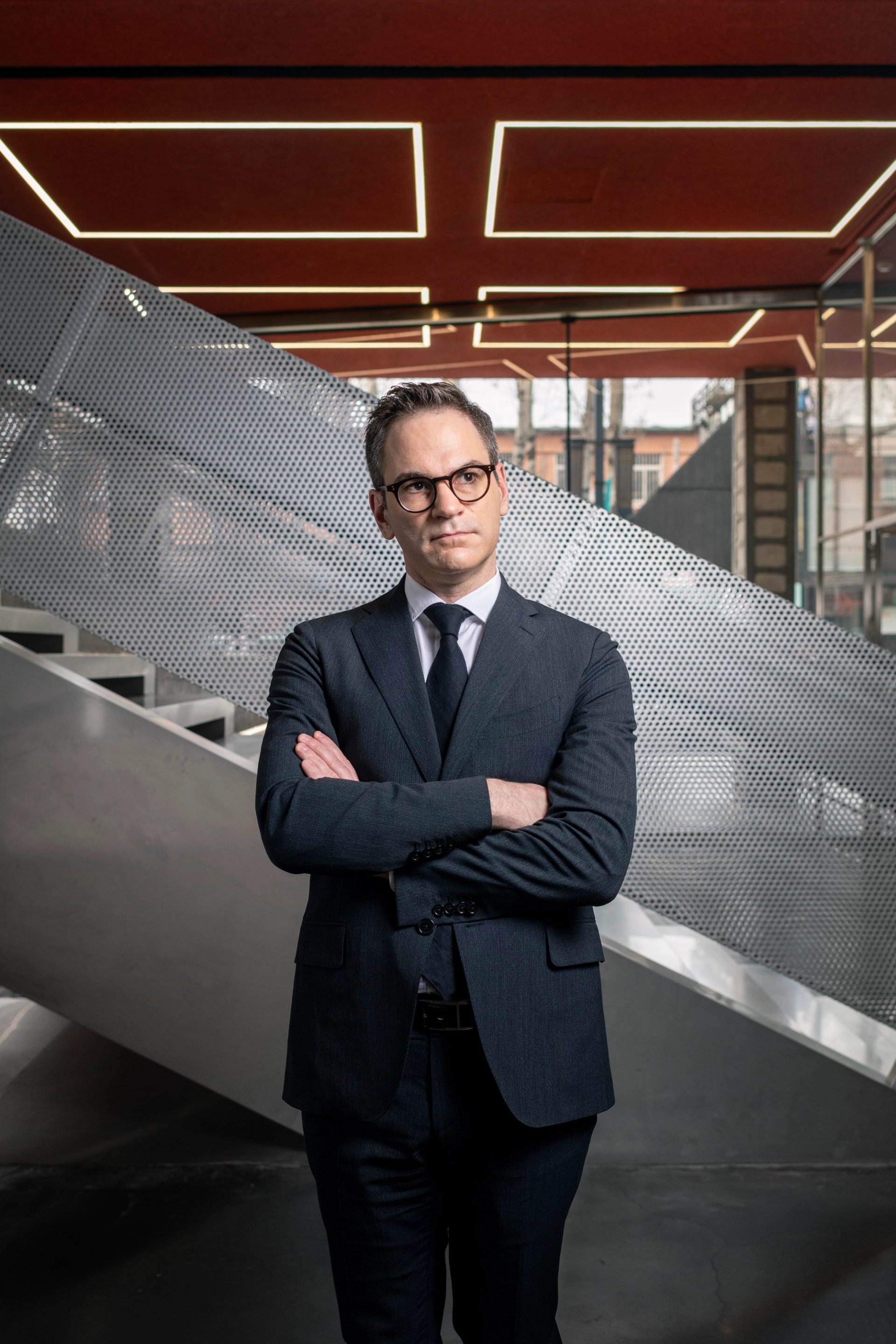
The curator of the Diriyah Contemporary Art Biennale, Philip Tinari, who is also the director and chief executive of UCCA Center for Contemporary Art in China © Diriyah Biennale Foundation
Saudi Arabia is arguably in a similar position today as it undergoes huge cultural and economic changes in line with the government’s Vision 2030 plan designed to diversify the economy. Chinese artists featured in the Diriyah Biennale include Wang Sishun, Xu Bing and Zhang Peili.


